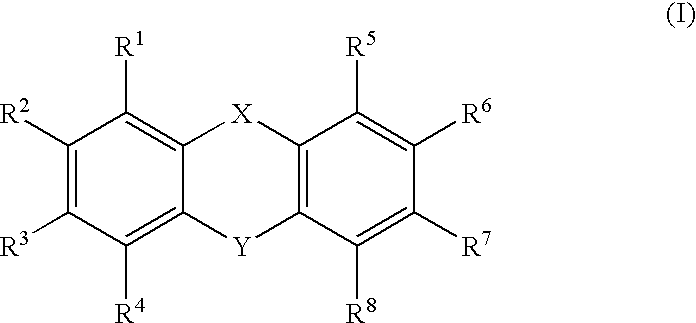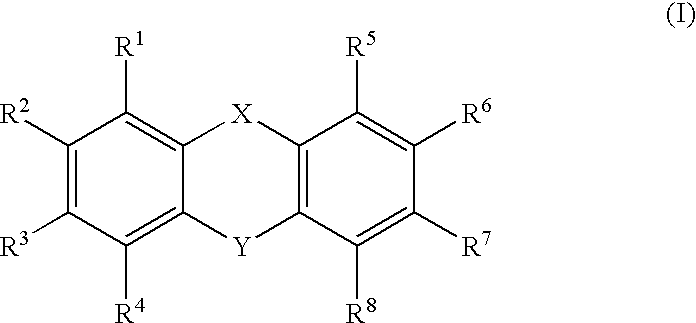Nonaqueous electrolytic solution and secondary battery containing the same
- Summary
- Abstract
- Description
- Claims
- Application Information
AI Technical Summary
Benefits of technology
Problems solved by technology
Method used
Image
Examples
example 1
[0074] In a mixed solvent of ethylene carbonate (EC) and diethyl carbonate (DEC) with a volume ratio of 3:7, lithium phosphate hexafluoride (LiPF.sub.6) was dissolved in a concentration of 1 mol / liter to give an electrolyte, and dibenzofuran was added thereto in a concentration of 0.15 mmol / g to give an electrolyte.
example 2
[0077] An electrolyte was used which was prepared in the same manner as in Example 1, except that xanthone was added in place of dibenzofuran.
example 3
[0078] An electrolyte was used which was prepared in the same manner as in Example 1, except that dibenzosuberone was added in place of dibenzofuran.
PUM
 Login to View More
Login to View More Abstract
Description
Claims
Application Information
 Login to View More
Login to View More - R&D
- Intellectual Property
- Life Sciences
- Materials
- Tech Scout
- Unparalleled Data Quality
- Higher Quality Content
- 60% Fewer Hallucinations
Browse by: Latest US Patents, China's latest patents, Technical Efficacy Thesaurus, Application Domain, Technology Topic, Popular Technical Reports.
© 2025 PatSnap. All rights reserved.Legal|Privacy policy|Modern Slavery Act Transparency Statement|Sitemap|About US| Contact US: help@patsnap.com



